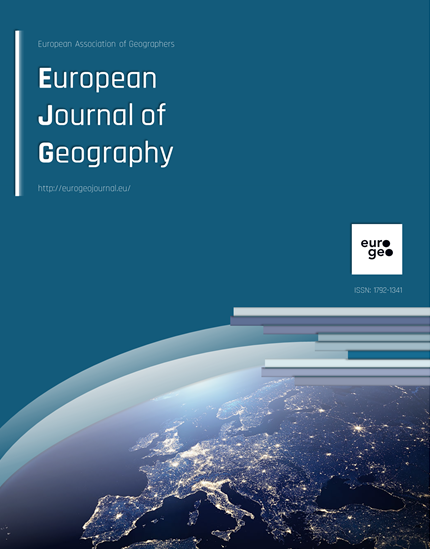Population-Health-Environment (PHE) Synergies Evidence from USAID-sponsored Programs in African and Asian core Conservation Areas
Published 2017-01-01
Keywords
- Population-Health-Environment,
- conservation,
- sustainable development,,
- family planning,
- fertility
- migration ...More
How to Cite
Copyright (c) 2022 European Journal of Geography

This work is licensed under a Creative Commons Attribution 4.0 International License.
Abstract
Do Population-Health-Environment (PHE) initiatives provide synergies above and beyond
more traditional singular efforts? Some development practitioners note the potential to combine
solutions to population-environment (PE) together with health-environment (HE) initiatives
for the global conservation of natural resources in developing countries while simultaneously
improving human health and livelihood security. PHE advocates in the policy arena have
promoted the importance of integrating “conservation, health, and family planning (FP)
interventions” in the management of some of the world’s most socio-economically
impoverished as well as ecologically rich environments. However, scant scholarly evidence
supports these claims. In this paper, we probe the potential effectiveness of integrated PHE
investments for conservation outcomes. Data was collected in World Wildlife Fund (WWF)
designated high priority marine and terrestrial conservation sites with USAID-sponsored PHE
programs in the Philippines, Nepal, India, Mozambique, Madagascar, Kenya, Cameroon and
the Central African Republic. We conducted individual and focus-group interviews with 754
individuals: WWF staff, staff from partner health and environment organizations, and local
men and women in the program service areas. Quantitative and qualitative results indicate
diverse, and in some cases dramatic, improvements in maternal and child health and
conservation measures that overall appeared to benefit from the integrative PHE approach.
Results also point toward the importance of promoting PHE interventions within the
framework of livelihood improvement.

